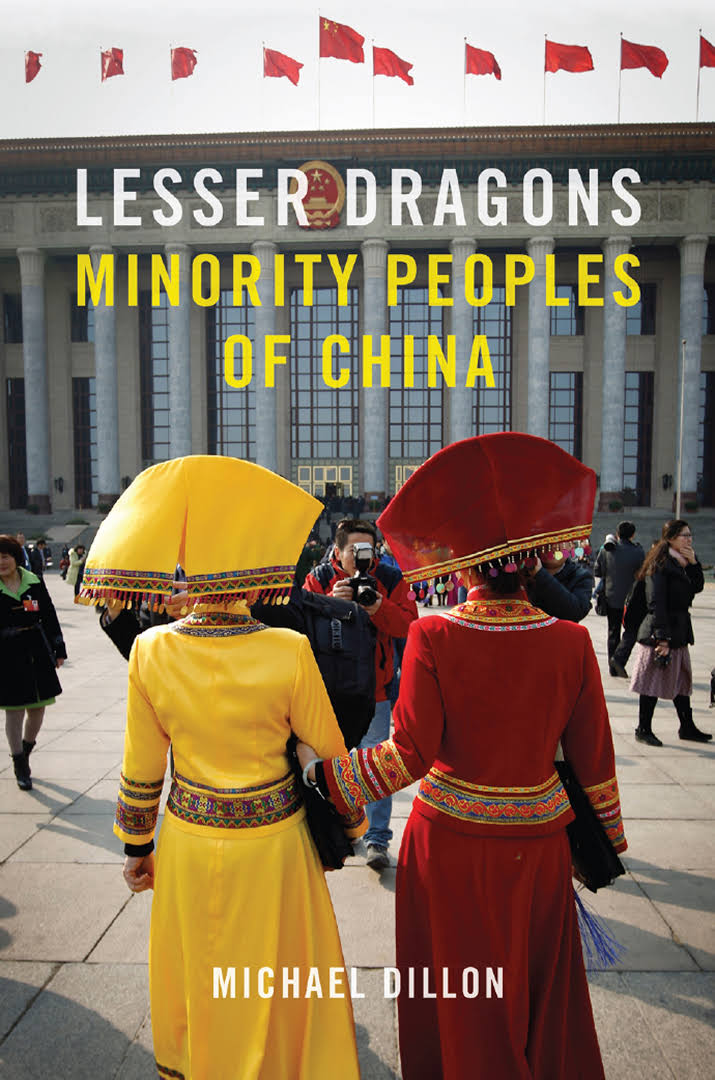Lesser dragons
Michael Dillon. 2018.
Lesser Dragons: Minority Peoples of China
London: Reaktion Books
ISBN: 9781780239118
Lesser Dragons: Minority Peoples of China explores the recent history of a dozen or so ethnic groups scattered across China’s continental periphery and in various parts of China proper. It devotes separate chapters to the largest and most prominent of these groups (Tibetan, Mongol, Uighur, Hui, Miao, and Manchu), as well as to Han subgroups such as the Hakka people in Taiwan and on the mainland. Written in a fluid style and unburdened by disciplinary jargon, it is replete with vivid descriptions of geography, ethnography, and other relevant subjects that general readers will find enlightening. Indeed, considering that very few social scientists have studied the full array of China’s minority regions and cultures, it can serve as a handy reference work for almost anyone, including specialists, in search of a comprehensive introduction to the subject.
Particularly useful are its opening chapters, in which the author sketches the various historical and political roots of People’s Republic of China’s policies toward the 56 ethnic groups that came to be designated (not always willingly) as such by the state. The author identifies the institutional framework of minority policy as the product of a ‘top–down’ approach to classifying nationality (民族), first adopted based on the Soviet concept of natsionalnost, and discusses how it has evolved through accommodation to local conditions even while retaining elements that continue to be resisted by multiple groups. While the widely varying cultural and physical settings make each region’s story unique, he refers regularly to nationwide trends, and leaders like Hu Yaobang and Deng Xiaoping, where their impacts on minorities were particularly noteworthy.
Also intriguing is the author’s devotion of an entire chapter to the multi-ethnic history of the city of Beijing, as exemplified by the venerable Yonghe Temple, a Tibetan Buddhist temple that dates from the early 18th century, as well as the contemporary Beijing Chinese Ethnic Culture Park. Both institutions reflect the state’s efforts over multiple eras to promote interethnic harmony, or in the ambitious phrase of the post-1978 era, the ‘great unity of the nationalities’. Following this examination of such symbolic gestures toward the lofty goals of social cohesion, however, much of the book focuses on the thornier issues of widening economic disparities and growing resentment among minorities toward Han rule. Post-2000 Xinjiang, in particular receives an extended treatment that sifts through conflicting explanations and descriptions of the significant incidents of violence there. Readers will find the accounts of this situation, and of local separatist movements or other dissident political trends there, helpful in understanding the roots of local antagonism toward Beijing’s policies.

Although evenhanded in evaluating both the achievements and the shortfalls of official policies toward minorities, the author does not explore some of the dimensions of these various crises that do not lie within the framework of a dichotomous relationship between minority groups and Han-dominated officialdom (or Han migrants in places like Inner Mongolia and Xinjiang). In the case of Xinjiang, for example, tensions between Kazakhs and Uighurs in the northern and central areas of the province are not mentioned at all, even though this has been a significant factor in the persistent unrest there. Given the near impossibility of conducting any sort of non-state-sponsored research in that area for the time being, we will probably have to await a more peaceful era to be able to dig deeper into the complex layers of the problematic state of Xinjiang, Tibet, and other sensitive areas. In the meantime, the book provides a very readable overview of a rich spectrum of peoples and events up to 2017, and offsets the more contentious regions with the more placid conditions in areas like Yunnan, Guangxi, and Manchuria.
As the author notes, the sheer size of his subject required him to leave out potentially interesting groups and topics, or to provide only cursory descriptions such as that of the Naxi and Moso of Yunnan and Sichuan. If he were to supplement this already rich trove of information in a future revision, he might consult more Chinese-language sources, especially historical texts like the 18th century literary accounts of the Miao by Zhao Yi (1727-1814) and other visiting literati. Zhao’s surprise at Miao sexual habits is similar to that of the missionary Samuel Pollard (1864-1915), cited by the author; less burdened by Christian prudery, however, Zhao is much less judgmental. Similarly, mid- to late-Qing Han writers in Taiwan recoil from the practice of headhunting by indigenous groups, but many write with considerable sympathy for the groups whose lands were being encroached upon by waves of settlers from the mainland.
In short, Lesser Dragons is a very accessible introduction to a formidably large and complex subject, especially suitable for adoption in courses on minorities or even general courses on modern Chinese history and society. One quibble: South Koreans are described (p.181) as still regularly using Chinese characters alongside hangul, the Korean alphabet, (unlike the North Koreans who have migrated into Yanbian in recent years); in fact, Chinese characters only rarely appear in print in South Korea these days.
Stephen Roddy, University of San Francisco, United States